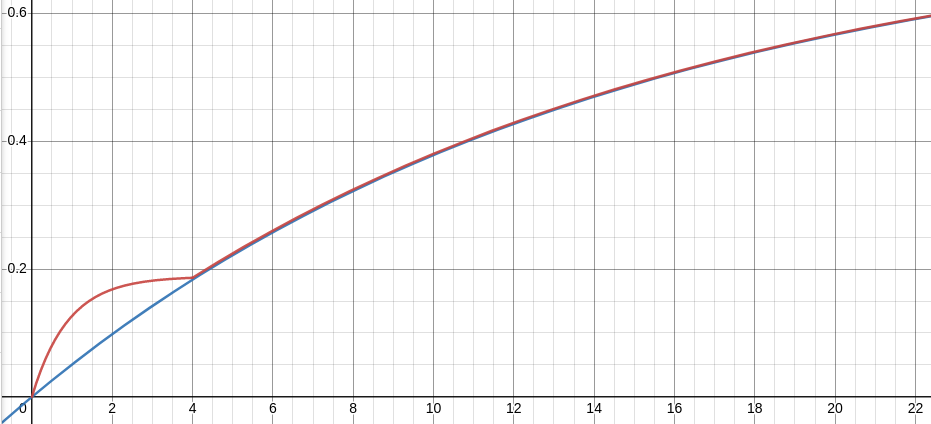[was told to post here, from physics stackexchange]
Says it in the title - I've done a bunch of stuff so far, but my work seems to be wrong.
I'm trying to build an RC car (pretty small, about 25 cm in length) with a manual transmission (3-speed), so I was running some math to see what motor I should buy, and what gear ratios I should use.
I'm using a brushed DC motor, and some pages I've seen have around $12000$ peak RPM and $714$ gcm peak torque.
In an attempt to try out some gear ratios, I tried to model the behavior of the car as follows:
Since the torque-rpm curve of the motor is linear, We can formulate them as:
$$ T = T_{max}(1-\frac{\omega}{\omega_{max}}) $$
(where $T$ is the torque, and $r$ is the wheel radius below)
Now, the acceleration of the RC car would be:
$$\frac{dv}{dt} = a = \frac{F}{m} = \frac{T}{mr} = \frac{T_{max}}{rm}(1-\frac{\omega}{\omega_{max}}) = \frac{T_{max}}{mr}(1-\frac{v}{r\omega_{max}})$$
Now, I take $T_{max} = T_{motor}\cdot G$ and $\omega_{max} = \frac{w_{motor}}{G}$, for some overall gear ratio $G$.
when graphed together, for various gear ratios, things don't seem right - the graph shows that the car takes (almost) the same amount of time to reach a maximum or target speed, regardless of if it had some initial speed.
Take a look at this plot, where the red goes from 1st gear, 2nd gear, and then to 3rd gear, but the blue is simply just the 3rd gear from the beginning. (here, taking $T_{motor} = 0.07 Nm \cdot Gear, \omega_{motor} = 12000 \cdot \frac{2\pi}{Gear\cdot60}$)
[Red: 1st gear (G=100) shifted to 2nd (G=25) at t=4s; blue: G=25 from the beginning to end.]
What am I doing wrong here? shouldn't the red curve accelerate much faster? Are the gears shifting at the wrong time? Am I using the wrong gear ratios (I cannot find the right ones)? Is the equation and model inaccurate?
